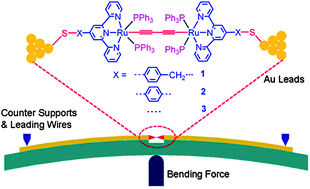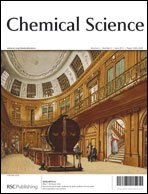Electrical conductance study on 1,3-butadiyne-linked dinuclear ruthenium(ii) complexes within single molecule break junctions†
Abstract
Single-molecule conductance of three sulphur-functionalized organometallic wires with two ruthenium(II) centres spaced by ![[triple bond, length as m-dash]](https://www.rsc.org/images/entities/char_e002.gif) C–C
C–C![[triple bond, length as m-dash]](https://www.rsc.org/images/entities/char_e002.gif) C–Ru backbone. Furthermore, modulation of molecular conductance is achieved by changing the length and π-conjugated system of the chelating 2,2′:6′,2′′-terpyridyl
C–Ru backbone. Furthermore, modulation of molecular conductance is achieved by changing the length and π-conjugated system of the chelating 2,2′:6′,2′′-terpyridyl


 Please wait while we load your content...
Please wait while we load your content...